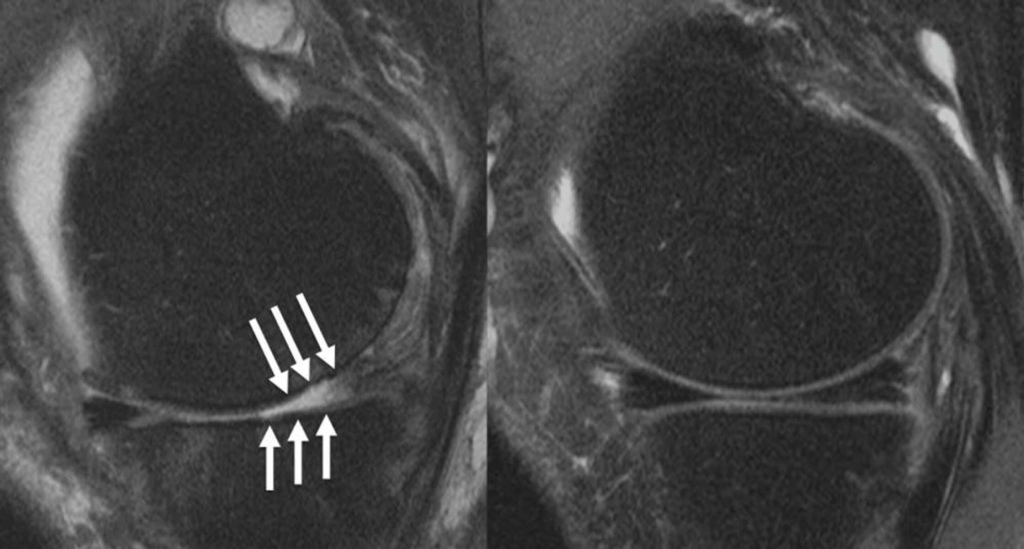How Stronger Thigh Muscles Can Reduce the Need for Knee Replacement Surgery
How Stronger Thigh Muscles Can Reduce the Need for Knee Replacement Surgery

Knee replacement surgery is a common procedure for individuals suffering from advanced knee osteoarthritis. However, researchers have recently discovered a potential way to lower the risk of needing this surgery. It turns out that having stronger quadricep muscles, relative to the hamstrings, may play a crucial role in stabilizing the knee joint and reducing pressure on it. In this article, we will explore the findings of recent research and delve into the implications for strength-training programs. So, let’s dive in and discover how stronger thigh muscles could help prevent knee replacement surgery.
The Importance of Quadriceps and Hamstrings

The quadriceps and hamstrings are two vital muscle groups that contribute to the overall stability and function of the knee joint. The quadriceps, located on the front of the thigh, consist of four muscles: the rectus femoris, vastus lateralis, vastus medialis, and vastus intermedius. These muscles are responsible for extending the knee and play a significant role in activities such as walking, running, and climbing stairs.
On the other hand, the hamstrings, situated on the back of the thigh, consist of three muscles: the biceps femoris, semitendinosus, and semimembranosus. These muscles aid in hip extension and knee flexion, allowing us to bend and straighten our legs. The balance between the quadriceps and hamstrings is crucial for optimal knee joint biomechanics and overall joint health.
The Study and Its Findings
A recent study presented at the annual meeting of the Radiological Society of North America (RSNA) examined the relationship between quadriceps and hamstring muscle strength and the risk of total knee replacement surgery. The researchers evaluated thigh muscle volume in 134 participants with knee osteoarthritis and compared those who had undergone knee replacement surgery with a control group. The results were enlightening.

The study found that individuals with a higher ratio of quadriceps to hamstring volume had significantly lower odds of requiring knee replacement surgery. Additionally, higher volumes of hamstrings and gracilis, a muscle on the inside of the thigh, were also associated with a reduced risk of surgery. These findings suggest that strengthening the quadriceps in relation to the hamstrings may be an effective approach for preventing the need for knee replacement.
Implications for Strength Training Programs
The implications of this study are significant, not only for individuals with knee osteoarthritis but also for the general population. Strengthening the quadriceps and hamstrings through targeted exercises can potentially improve knee joint stability and reduce the risk of developing advanced arthritis. Let’s explore how different forms of exercise can help strengthen these muscle groups.
1. Running
Running is an excellent way to strengthen your leg muscles, including the quadriceps and hamstrings. The repetitive motion of running helps build endurance and strength in these muscle groups. Incorporating regular running sessions into your exercise routine can contribute to better knee joint stability and potentially lower the risk of knee replacement surgery.
2. Cycling
Cycling is another form of exercise that can effectively target the quadriceps and hamstrings. Whether you prefer outdoor cycling or using a stationary bike, this low-impact activity provides an excellent workout for your leg muscles. Regular cycling can improve muscle strength and endurance, ultimately benefiting the stability of your knee joint.
3. Weightlifting
Weightlifting is known for its ability to build muscle strength and mass. When it comes to strengthening the quadriceps and hamstrings, exercises such as squats, lunges, and leg presses are particularly beneficial. Incorporating weightlifting into your fitness routine, under the guidance of a qualified trainer, can help you develop stronger thigh muscles and potentially reduce the need for knee replacement surgery.
4. Yoga
Yoga may not be the first exercise that comes to mind when thinking about strengthening leg muscles, but it can be surprisingly effective. Specific yoga poses, such as Warrior I and Warrior II, engage the quadriceps and hamstrings, promoting muscle strength and flexibility. Regular yoga practice can contribute to better knee joint stability and potentially lower the risk of needing knee replacement.
Clinical Management and Training Recommendations
The findings of this study have significant implications for both clinical management and strength training recommendations. Healthcare professionals and clinicians should consider the balance between quadriceps and hamstring muscle groups when interpreting imaging exams and designing treatment plans. The ratio of extensor muscles (quadriceps) to hamstring muscles appears to be crucial in reducing the likelihood of total knee replacement surgery.
Strength training programs should focus on exercises that target both the quadriceps and hamstrings. While overall muscle volume is important, maintaining a balance between these muscle groups is key. Incorporating exercises such as squats, lunges, leg presses, and yoga poses into strength training routines can help achieve this balance and potentially prevent the need for knee replacement surgery.
Conclusion
Having stronger quadricep muscles relative to the hamstrings may play a significant role in reducing the risk of knee replacement surgery. Strengthening the quadriceps and hamstrings through exercises like running, cycling, weightlifting, and yoga can contribute to better knee joint stability and potentially prevent the progression of knee osteoarthritis. By adopting a balanced approach to muscle strengthening, individuals can improve their overall joint health and potentially avoid the need for surgical intervention. So, let’s prioritize thigh muscle strength and take proactive steps towards maintaining healthy knees.


